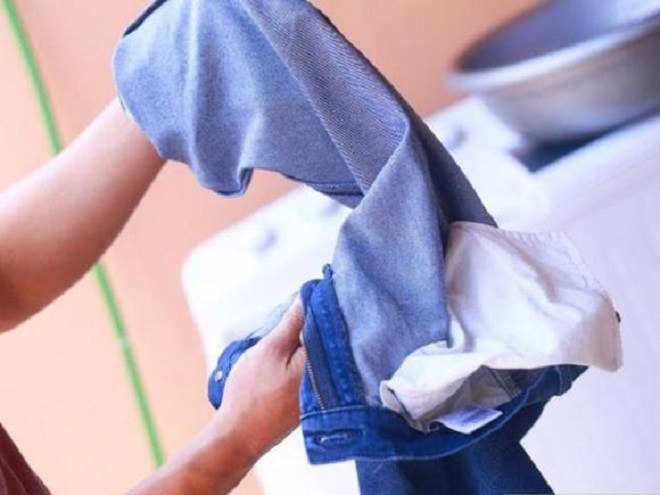Is it right or wrong to turn clothes inside out when drying them?
When drying clothes, the fabric’s surface comes into direct contact with the outside environment, especially the sun. Over time, this can cause the colors to fade. Therefore, many people have the habit of turning their clothes inside out when drying them to preserve the colors and extend their lifespan.
While this habit may seem beneficial, it actually poses several risks. Specifically, it can cause bacteria and dust to cling to the inside of the garment. What’s more, during the summer months, insects and insect eggs can easily find their way onto the clothing, especially for those who have gardens or trees nearby. Wearing these clothes can then irritate and damage our skin.

Some common mistakes when drying clothes
– Not wringing out clothes before drying
Completely wringing out clothes before drying can cause them to wrinkle, so many people hang their wet clothes on the line as they are. However, this allows bacteria to thrive, especially during rainy, humid, or damp weather, leading to an unpleasant odor and potentially causing skin infections.
It is best to wring out the clothes, shake them to straighten them, and then hang them to dry. If the clothes do wrinkle, you can always iron them once they are dry.
– Drying clothes overnight
Some people dry their clothes overnight out of laziness or a belief that the absence of sunlight will prevent color fading. However, during the night, humidity increases, and temperatures drop, causing the clothes to become damp.
Constant dampness not only affects the durability of the fabric but also promotes the growth of fungi and bacteria, leading to skin infections such as ringworm and allergies. This is especially concerning for families with young children, as their sensitive skin can be easily affected.

– Drying clothes in a dusty area
Wet clothes easily attract dust and dirt, so if you dry them in a dusty area, such as near a busy road or a construction site, they will quickly become covered in grime. This not only looks unpleasant but also poses health risks, as the clothes become a breeding ground for bacteria, increasing the likelihood of skin infections.
– Drying in a place with insufficient sunlight
Sunlight is a natural disinfectant, so it is recommended to dry clothes in a sunny spot. Drying clothes in a dark or enclosed space, such as a bathroom, increases the likelihood of bacterial growth and prolongs the drying process. Wearing clothes infested with bacteria can be hazardous to your health.
“Pork Rinse: A Clean and Tasty Transformation”
Introducing: The Ultimate Guide to Safe Pork Handling and Preparation.
You’ve probably heard the age-old advice to always wash your pork before cooking it. But did you know that this common practice could actually be doing more harm than good? It’s time to unravel the truth and discover the right way to handle and prepare pork.
Stay tuned for a comprehensive guide that will transform the way you think about pork preparation. From understanding the risks associated with improper handling to mastering the art of safe and delicious cooking, we’ll cover everything you need to know to become a pork-prep pro.



































